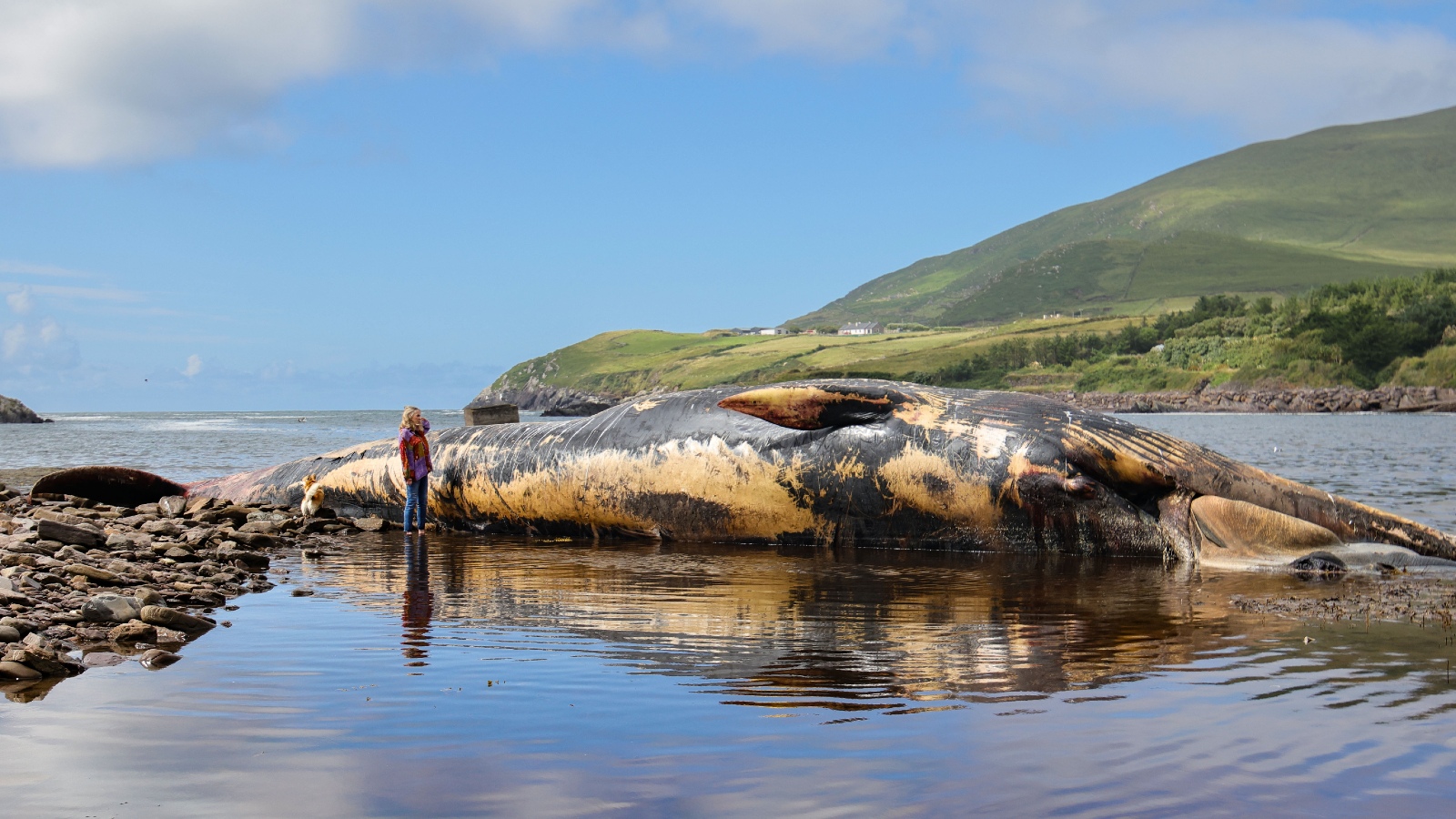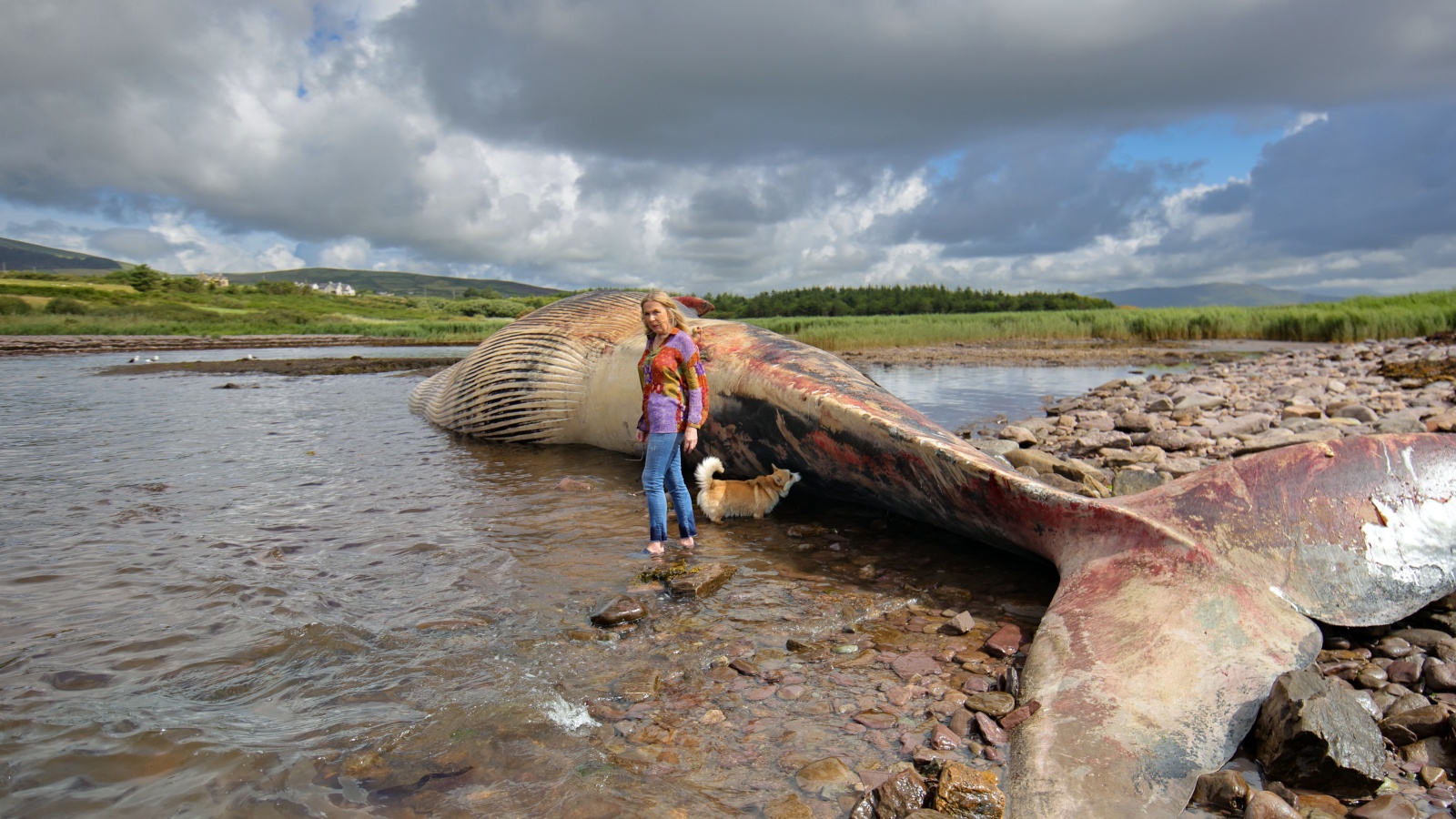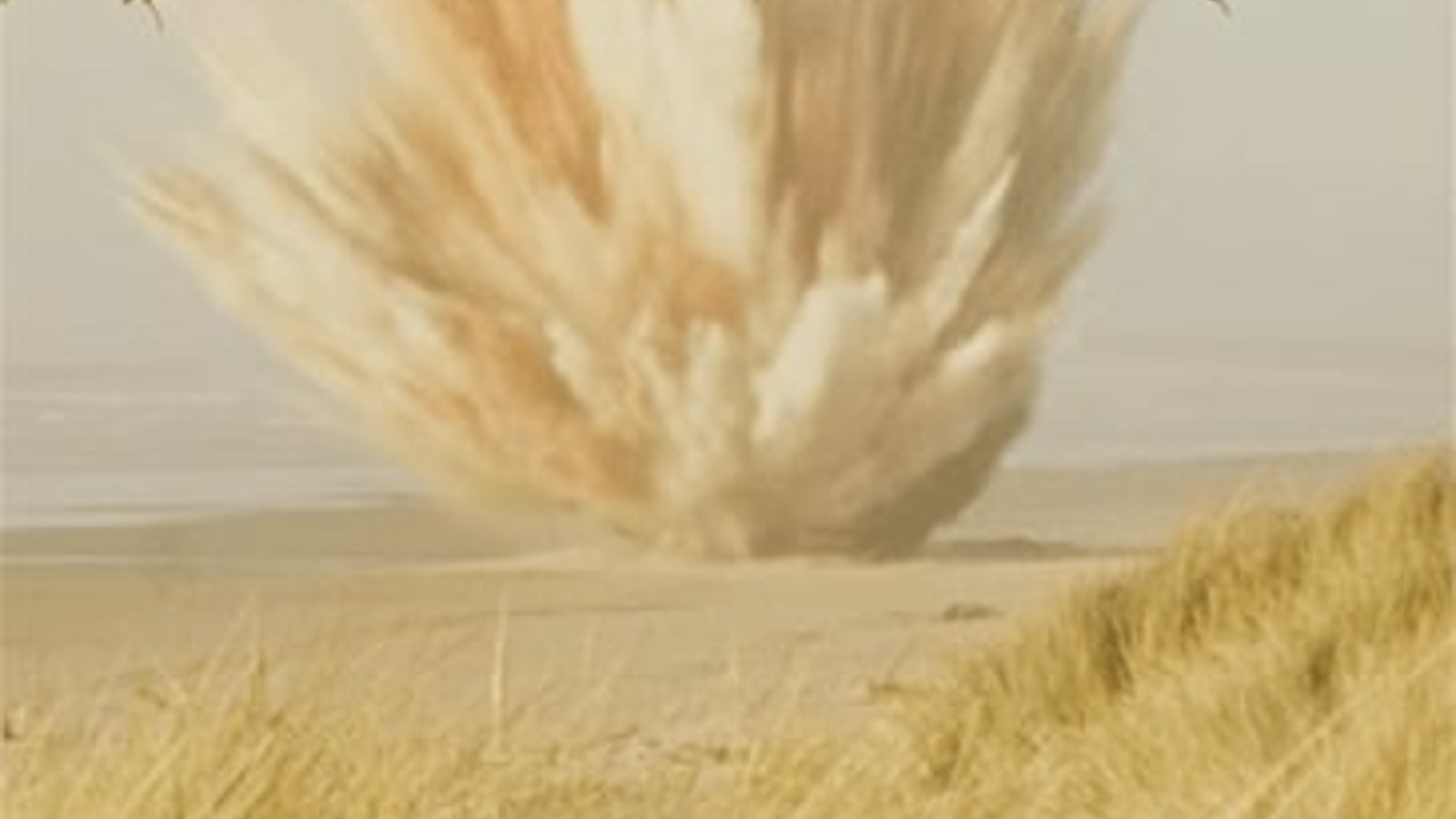
Wildlife experts were recently forced to abandon the autopsy of an enormous fin whale corpse that washed up on a beach in Ireland after sounds coming from the giant creature's gut suggested that it could explode if they cut it open.
The dead fin whale (Balaenoptera physalus), which was around 62 feet (19 meters) long, washed up in the early hours of July 9 at Baile Uí Chuill Strand, in County Kerry, the Irish Examiner reported. The cause of death is unknown but the hefty whale had likely been dead for up to three weeks before it washed ashore, based on the level of decomposition.
Experts from the Irish Whale and Dolphin Group (IWDG) arrived at the scene to collect samples for a necropsy, or animal autopsy, but were forced to stop due to fears that the body could explode.
"I got blubber, baleen and skin," Stephanie Levesque, strandings officer at IWDG, told the Irish Examiner. "I was going to attempt to get some muscle but I heard some sounds and was like, this is going to explode in my face if I go any deeper."
Related: $500,000 chunk of 'floating gold' found in dead whale

When whales die, their guts begin to fill with methane gas, which often causes the corpses to inflate like a balloon, float on the ocean's surface — and occasionally float onto shore like the dead fin whale. In high enough concentrations, and when mixed with oxygen in the air, the gas can cause whales to explode, either spontaneously as pressure increases, or when the remains are cut open; although this is very rare, Levesque told Live Science in an email.
In 2013, a marine biologist in the Faroe Islands had a lucky escape after a sperm whale (Physeter macrocephalus) that washed up dead violently exploded when the scientist cut into its stomach, The Guardian reported at the time. And in 2019, an unidentified baleen whale spontaneously exploded on the surface of the sea off the coast of California, spraying blood and guts into the water, according to IFLScience.
Occasionally, wildlife officials will deliberately detonate the gas-filled corpses when they wash up to prevent them from slowly decomposing and releasing foul smells that drive away visitors. The most infamous example of this came in 1970, when a 45-foot-long (14 m) sperm whale that washed ashore in Florence, Oregon, was blown up with half a ton of dynamite, creating an enormous blast that obliterated the remains.
Related: Weird 'alien' sacks wash up on UK beach, most likely a whale's stomach
With the fin whale in Ireland, it later became clear that the whale was unlikely to explode and it has been left to decompose naturally, Levesque told Live Science. "There was some bubbling [sounds] but nothing that led me to believe it would actually explode." The necropsy was abandoned as a precaution to make sure that the body cavity stayed intact, she added.

Typically, about one to two fin whales wash up in Ireland a year, Levesque told the Irish Examiner.
There are around 100,000 fin whales worldwide, but the species is still considered vulnerable to extinction due to pressures such as climate change, plastic pollution and overfishing of krill — their preferred food source — by humans, according to the International Union for Conservation of Nature's (IUCN) Red List of Threatened Species.
However, most populations are starting to increase from historic lows caused by the whaling industry in the 19th and 20th century. In January 2022, almost 1,000 individuals — the largest aggregation of the species ever witnessed — were spotted feeding on a giant mass of krill in Antarctica.







